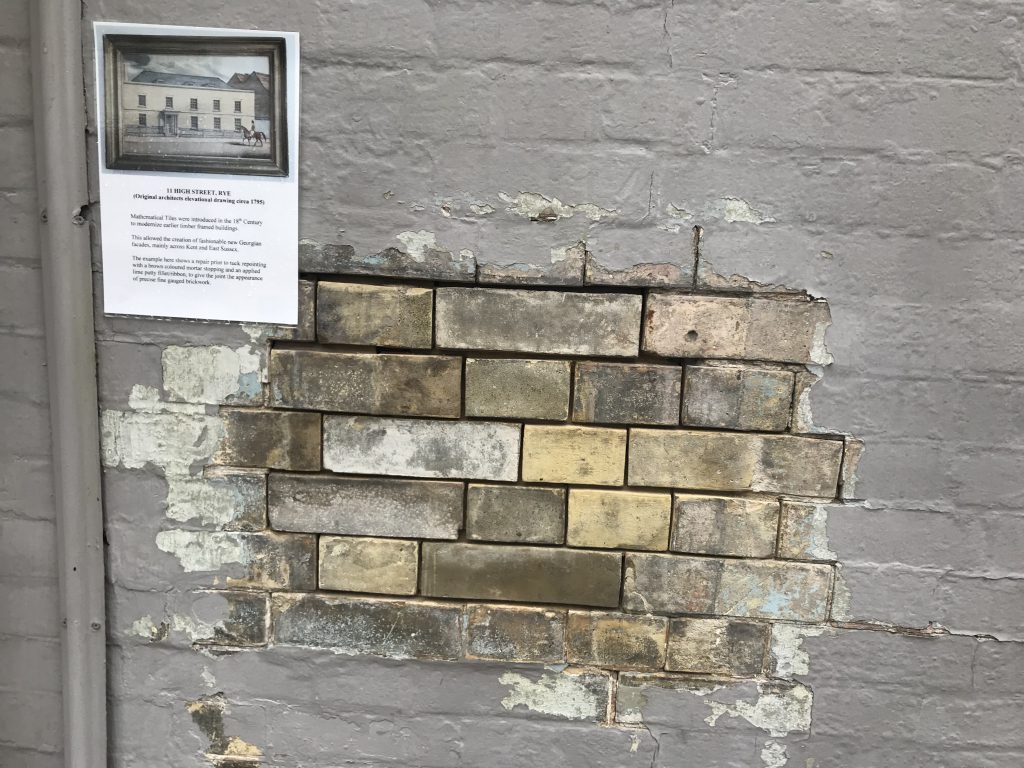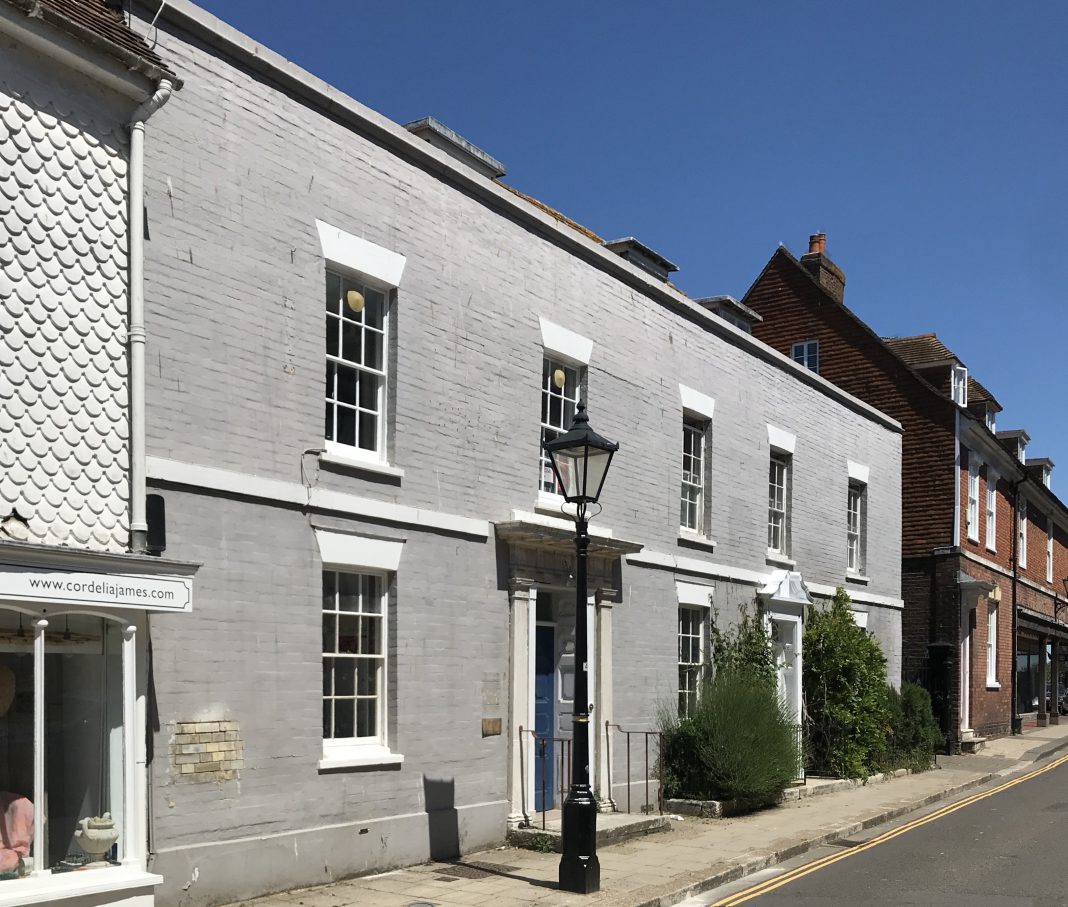If you walk along the High Street and stop outside Rye Bank Gallery (the former HSBC bank) you could be forgiven for thinking that the wall on the front elevation is damaged and awaiting repair. There is a section of ‘brickwork’ (which you can see in the left hand corner of the main photograph above) which looks unfinished but, just above it, a poster explains all – for these are not bricks, but mathematical tiles.
Mathematical tiles have been part of Britain’s architectural heritage since the early 1700s. They were probably first introduced to update and make weathertight old timber framed buildings and there are many buildings with tile facades still in existence, particularly in Kent and Sussex.
A 1987 count of surviving mathematical tiles in English counties found the most in Kent (407 buildings), followed by Sussex (382), Wiltshire (50) Surrey (47), and Hampshire (37). Tiles include red, multi-red, black glazed and white, but mathematical tiles are not always easy to recognise and are often mistaken for conventional brickwork.
They were laid on the exterior of timber framed buildings as an alternative to brickwork, which their appearance closely resembled.. A distinctive black variety with a glazed surface was used on many buildings in Brighton from around 1760 onwards, and is considered a characteristic feature of the town’s early architecture. Although brick tax (1784–1850) was formerly thought to have encouraged use of mathematical tiles, they were in fact also subject to the same tax.
Many different forms were used
The tiles took on different forms, some were laid in a partly overlapping pattern, not dissimilar to roof shingle tiles. Their lower section—the part intended to be visible when the tiling was complete—was thicker; the upper section would slide under the overlapping tile above and would therefore be hidden.
In the top corner was a hole for a nail to be inserted and they would then be hung on a lath of wood, moulded together with an infill of lime mortar to form a flat surface. They would then resemble either header bond or stretcher bond brickwork. Others were glazed and laid end to end in a mathematical pattern, giving the appearance of bricks, the most popular colour being black.

Mathematical tiles had several advantages over brick: they were cheaper and easier to lay than bricks, as there was no need for skilled workmen and were also more resistant to the weathering effects of wind, rain and sea-spray, making them particularly useful at seaside locations such as Brighton and Rye.
These hand made tiles are still made today and one of the largest and most established producers is Aldershaw Tiles in Sedlescombe who make ‘truly hand made roof and floor tiles’ employing traditional methods and skills passed down by centuries of English tile makers’.
Clay gives colours warmth
They are formed from Wadhurst clay which is dug from their own pit in the heart of the Sussex Countryside and imparts that warmth of colour in subtle tones of red and orange that is so characteristic of the Weald of Kent and Sussex.
Aldershaw hand made tiles are very much sought after by conservationists, architects and planners whenever the project calls for something special and genuine, ancient or modern. They will enhance any property and often aid the planning process in areas of outstanding natural beauty or other sensitive areas due to their rich colours, subtle texture variations and patina.
There are many examples of mathematical tiles which have been preserved on a variety of properties in Brighton and the county town of Lewes and there are more examples in Rye. So when you next take a stroll around the town, see if you can spot them, it’s not easy.
Image Credits: Nick Forman .




Great article Nick, and thank you for your regular and interesting observations in and around Rye. There’s something deeply satisfying about mathematical tiles and it is fun to spot them in Rye. There’s no doubt that their usage was very much about Keeping up with the Joneses in the Georgian era. It’s also worth pointing out that ports like Rye would have had great expertise in working with timber due to shipbuilding, so that construction method would have been preferred over masonry for houses too. Mathematical tiles were a great work-around to keeping up with fashion whilst using local skills. The glazed tiles on Hastings Contemporary Gallery (ex Jerwood) are in some ways a contemporary take on this construction method, they certainly still look good despite the sea air.